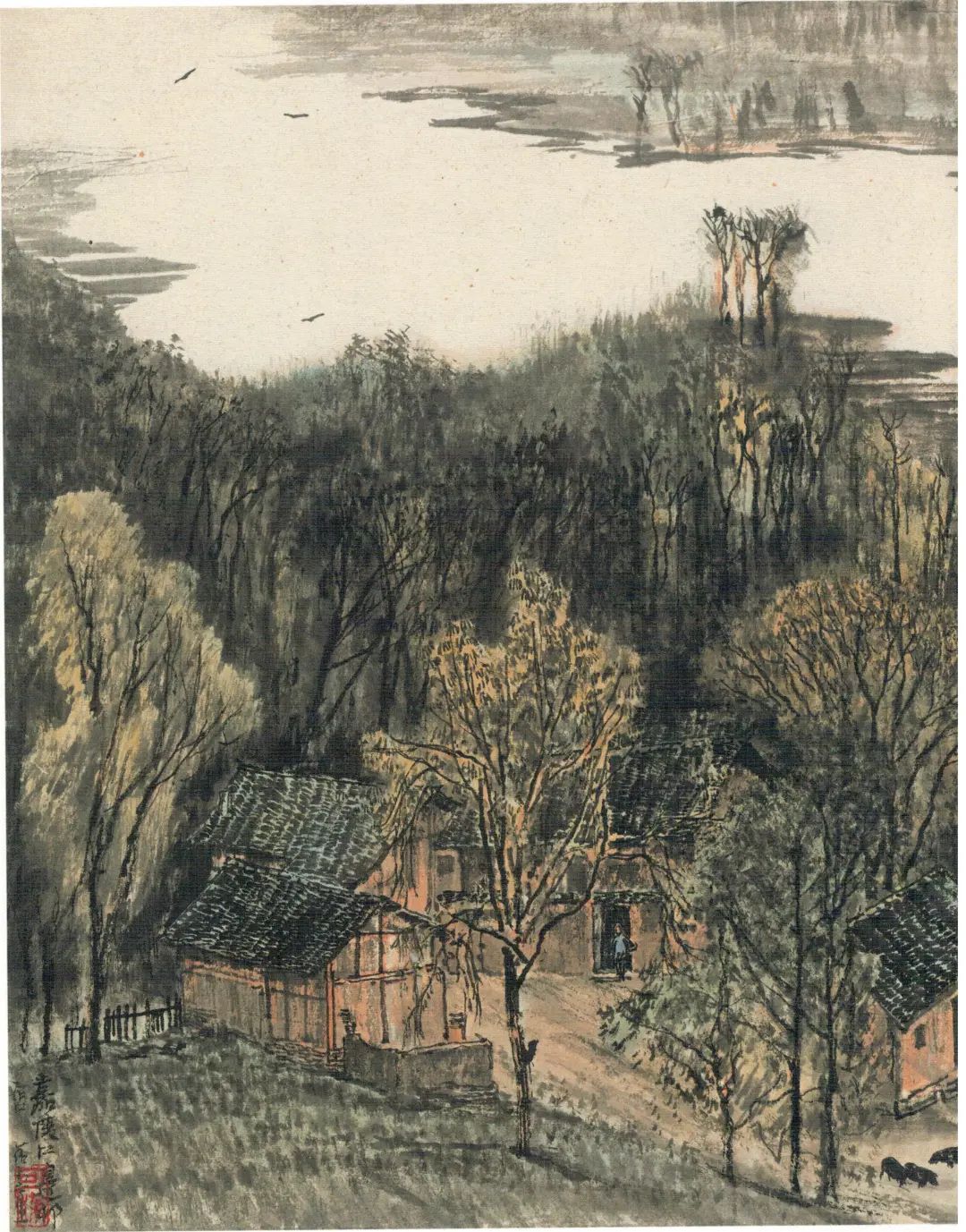Online painting and calligraphy works of famous artists appreciation (twenty-five)

Jialing Riverside Village House
1956
52.4cm×44.6cm
Postscript
Village by the Jialing River
Sketch by Kecheng
Seal
Kechen
Appreciation of the work
This is a work of painting a low and distant scene from a high position, with a small hillside and a farmhouse in the near view, a forest in the middle view, and the Jialing River flowing quietly in the far view, as well as a sandbank and birds. The farmhouse is a courtyard with tile roofs, brick foundations, and wood-paneled walls around the house. The sun shines in the courtyard and the breeze blows through, a peaceful and calm scene.
For traditional painters, this kind of landscape is more difficult to paint because there are no rocks, no ancient trees, and not many past examples to learn from, but for Li Keran, this is not a difficulty, he has the method of painting watercolor landscapes and the experience accumulated through two years of ink sketching. What attracts us to the painting is, first of all, the sunlight inside and outside the courtyard, shining on the walls, the ground, and the surrounding trees. The trees in the distance are in the shadows, painted in heavy ink, and they contrast everything bright in the courtyard, accentuating the golden yellow emitted by the leaves in the close up backlit scene, and bringing a poetic warmth to the small courtyard. This kind of ink sketching with light was tried by the Lingnan painter Gao Jianfu before Li Keran, and explored with great success by Li Keran's teacher Lin Fengmian. However, while Lin Fengmian mainly used color to express light (especially backlighting), Li Keran here used mainly ink and wash, and his method was directly related to the light of the scene in front of him. On the one hand, he is painting the light of the object itself; on the other hand, he is not limited by the light of the object itself, for example, the tiled roof should have been subject to light, but he left it unpainted, using it to highlight the effect of the light on the leaves and walls. The trees in the distance cannot all be in dark shadows, but he omitted them as usual. The water surface in the distance is traditionally left white, which is exactly the same as the trees dyed in ink. The discovery of the wonderful use of light in landscape painting through sketching and the search for a way to portray light was one of Li Keran's major gains from sketching.
The outline of lines, the blocking of ink, and the accumulation of dots and lines are the basic methods of painting in this work. The attention to the richness and variation of layers, the search for contrasts of sparseness and density, and the subordination of brushwork and ink to the needs of form and landscape are particularly important in the painting. (Lang Shaojun, published in Li Keran, 1982)